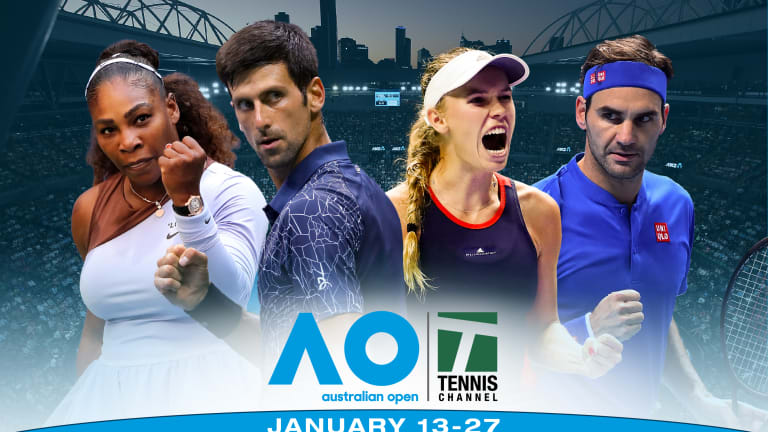American tennis fans are surely bewildered by the wild inconsistency and fluctuating fortunes of Jack Sock, who must rank right up near the top of the list of the most enigmatic players in his profession. Sock seems in many ways to still be figuring out who he is and what he wants out of the game. His passion for tennis is unmistakable during some stirring stretches, but he can wander inexplicably into the neighborhood of indifference. To be a Jack Sock fan is to suffer from exasperation frequently and to celebrate success too infrequently.
Sock played his first round contest at the Australian Open last night against Alex Bolt, a wild card from the land Down Under. This one figured to be an intriguing test for the 26-year-old American. Sock broke the world No. 159 in the fifth game, made it count, and won the opening set 6-4. He was broken in the second game of the second set, had chances to be break back in the third, but fell behind his inspired opponent 3-0. Bolt extended his lead to 5-1 before Sock made a concerted push to salvage the set, taking the next two games and making his adversary work hard in the ninth game. But Bolt held on to win the set 6-3.
The American had no reason to be discouraged at that stage, but thereafter he was soundly beaten by the crowd favorite, fading badly over the last two sets, bowing out tamely, 4-6, 6-3, 6-2, 6-2.
Sock knows he can do a whole lot better in best-of-five set matches at the majors. In all of 2018, he won only one match at the four Grand Slam events. The year before, he was not much better, gaining only three wins at the game's four biggest events. Across his career, his best showing at a major was in 2015 at Roland Garros, when he made it to the round of 16 before losing to the redoubtable clay-court genius Rafael Nadal. He replicated that feat in 2016 at the U.S. Open, defeating Marin Cilic in a fine performance before losing to Jo-Wilfried Tsonga.
The majors are where Sock clearly has to raise his reputation, and his dismal showing in Melbourne this time around is another setback for a player who has an exceedingly heavy forehand and a very good serve. But it is not only at those elite events that he needs to redefine himself. He has to perform with considerably more reliability week in and week out on the ATP tour as well. Examining his record over the last few years, he has seldom done himself justice. His first significant season was in 2014, which he concluded at No. 42 in the world. The following year, Sock climbed to No. 26, and then in 2016 he moved up three spots to No. 23.
All of that progress put Sock in a position to make a move in 2017, and he did just that. Sock won Auckland at the start of that season, and then added the title in Delray Beach, Florida his collection. In the spring, he fared reasonably well at the Masters 1000 hard court events, reaching the semifinals at Indian Wells and the quarters in Miami. He lost to Roger Federer in the former and Rafael Nadal in the latter, but those were respectable showings.
Over the summer, he was a semifinalist in Washington on the hard courts. But then he went into a serious tailspin. In his next seven tournaments, he won only four matches. His confidence was gone. His intensity was missing. The year seemed to have slipped away from him. Yet he raised his game just in the nick of time to win the Paris Bercy Masters 1000 tournament, rallying from the brink of defeat against Kyle Edmund in the first round before carving out a hard-fought victory. He then moved through the field with little hesitation. That remarkable run gave Sock a place in the elite eight man field in London at the ATP Finals.
Sock took full advantage of his good fortune. In the round-robin stage he upended Cilic and Alexander Zverev. He lost in the semifinals to Grigor Dimitrov but he had closed the year in style at No. 8 in the world.
His boosters hoped he would pick off in 2018 where he left off in 2017, but that was not the case. He lost the same number of matches in 2018 as he did the previous year, 21, but did not win nearly as many contests. He had recorded 38 victories in 2017 but in the entire 2018 season he won a desultory nine matches.
INTERVIEW: Jack Sock and Mike Bryan, at the 2018 ATP Finals
